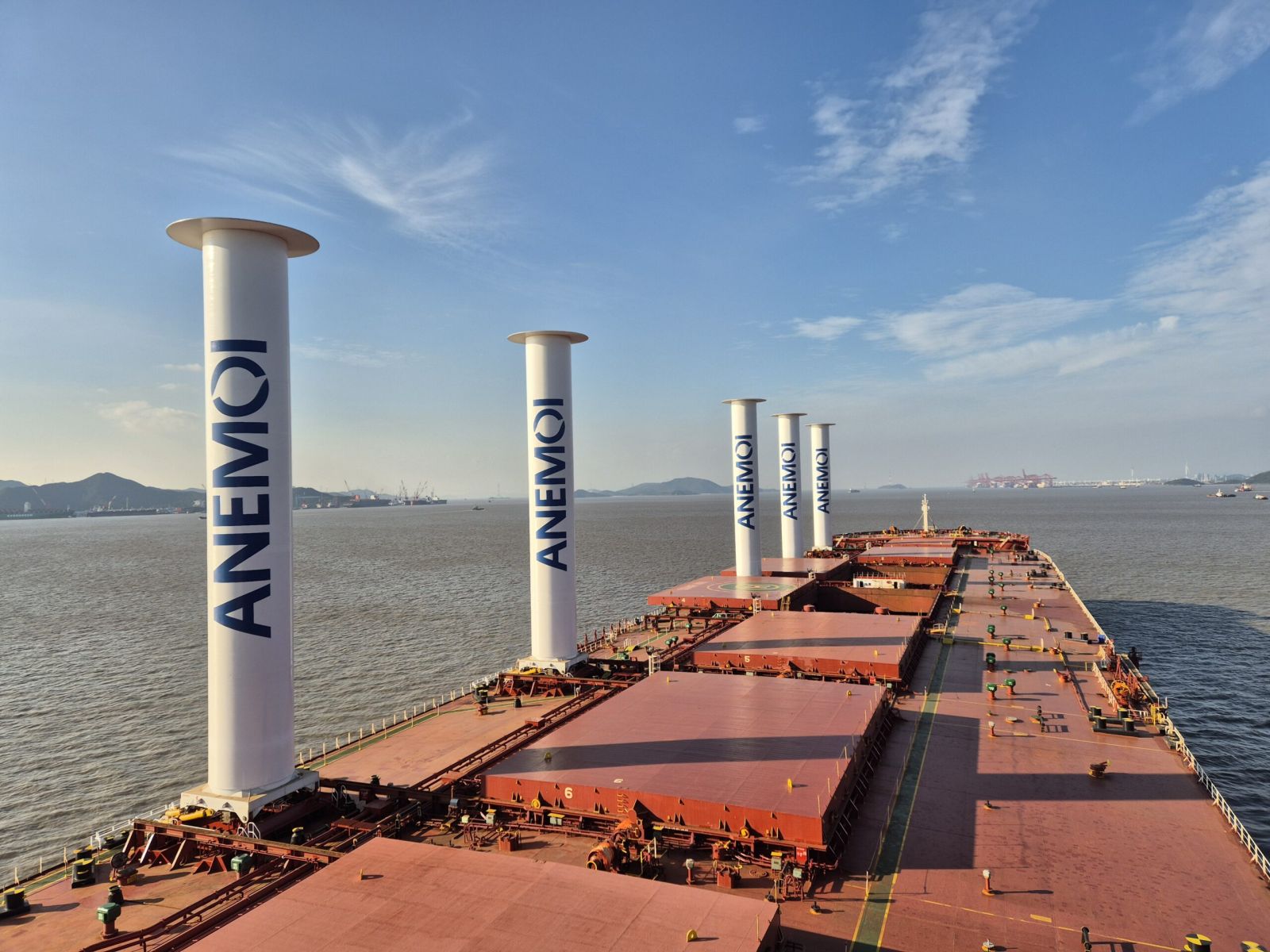Here is the world's largest wind-propelled ship 🚢
Published by Cédric,
Author of the article: Cédric DEPOND
Source: Anemoi Marine
Other Languages: FR, DE, ES, PT
Author of the article: Cédric DEPOND
Source: Anemoi Marine
Other Languages: FR, DE, ES, PT
Follow us on Google News (click on ☆)
In October 2024, this 400,000-ton bulk carrier saw its deck transformed into a testing platform for five rotor sails (or Flettner rotors). Installed by the British company Anemoi, these cylindrical structures harness a physical phenomenon known as the Magnus effect. When spinning, they generate additional thrust, enabling the ship to cut down on fuel consumption.

Built in 2012 in China, the Sohar Max is part of the Valemax class, a generation of ships designed for optimal energy efficiency in transporting ore. Under the initiative of the Brazilian mining giant Vale, the vessel was retrofitted at a Chinese shipyard to accommodate these innovative sails.
The initial trials, conducted during a voyage between China and Brazil, went smoothly. According to estimates, these sails could reduce annual fuel consumption by 6%, thereby avoiding the emission of 3,000 metric tons (around 3,300 US tons) of CO₂. These preliminary results highlight the potential of this technology.
This project is part of Vale's Ecoshipping program, aimed at reducing the carbon footprint of its fleet. The Sohar Max, the first to test this technology on a large scale, might be followed by other ships. Similar sails are already planned for another bulk carrier, the NSU Tubarão, by 2025.
The adoption of rotor sails is encouraged by international regulations such as the CII notation and the EEXI index. By supplementing traditional propulsion systems, they offer a compact and effective solution to meet emission reduction requirements.
The project partners, including the ship's Omani owner Asyad, see these sails as a viable alternative for large-capacity ships. Their design incorporates a folding system that preserves loading capacity, ensuring unaltered operability.
Experts at Anemoi believe these sails are more than just a trial: they lay the groundwork for a major energy shift in heavy maritime transport. The data collected during the tests will be used to refine the technology.
The Sohar Max represents a key milestone. If these sails live up to their potential, they could revolutionize the shipping industry, reducing not only costs but also ecological impacts.
What is a rotor sail and how does it work?
Rotor sails, also known as Flettner rotors or turbovent sails, are vertical cylinders installed on ships to harness wind energy. Unlike traditional sails, they use the physical phenomenon called the Magnus effect.
When these cylindrical rotors spin on their axis, the wind hits them and creates a pressure difference on either side. This force, perpendicular to the apparent wind, generates additional thrust that helps propel the ship.
This highly compact system requires only limited space on the deck. It is often equipped with a collapsible mechanism, optimizing port operations without interfering with loading or unloading processes.
Rotor sails allow ships to reduce fuel consumption, lowering costs and the carbon footprint, while complying with international emission reduction standards.